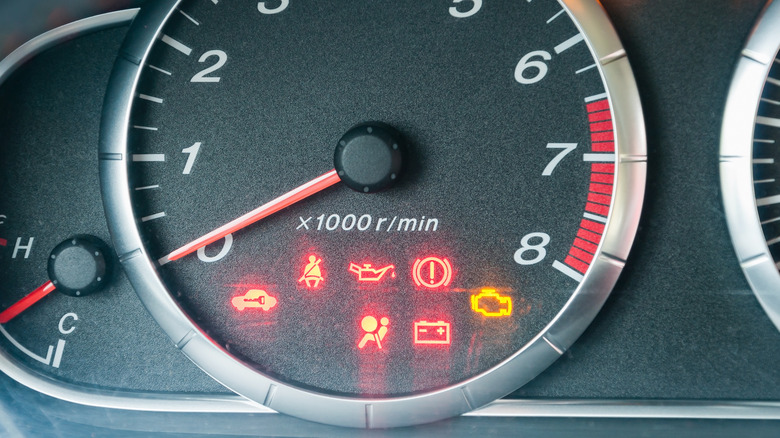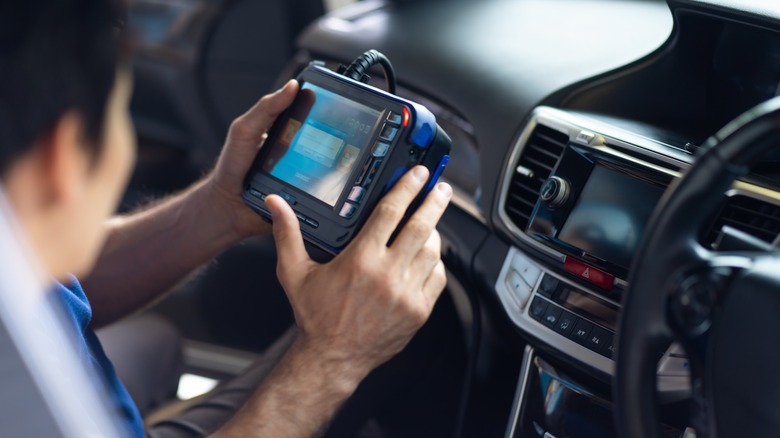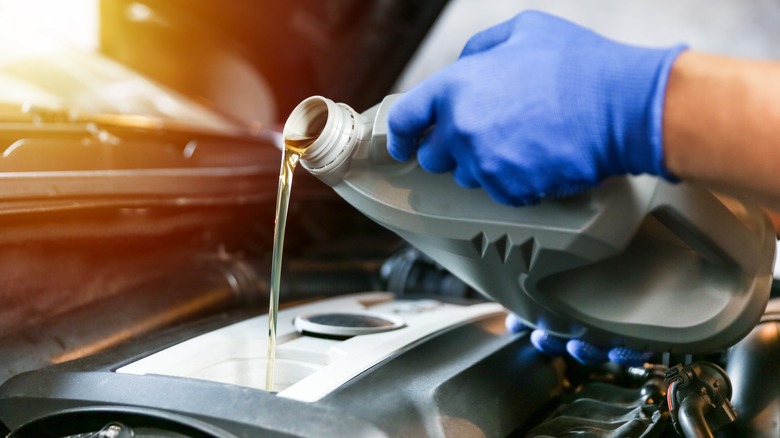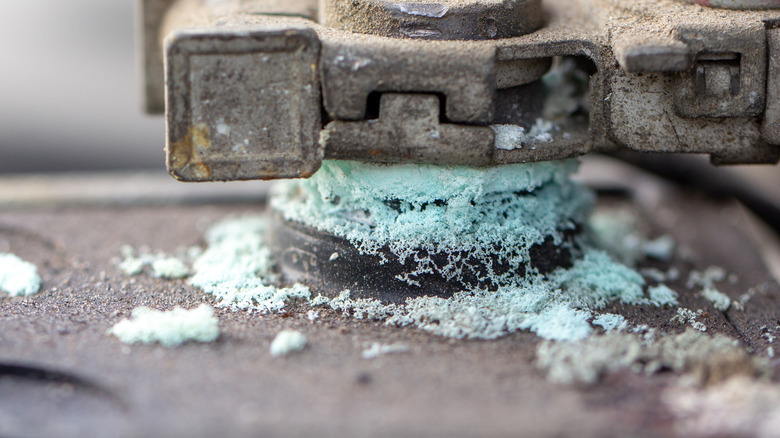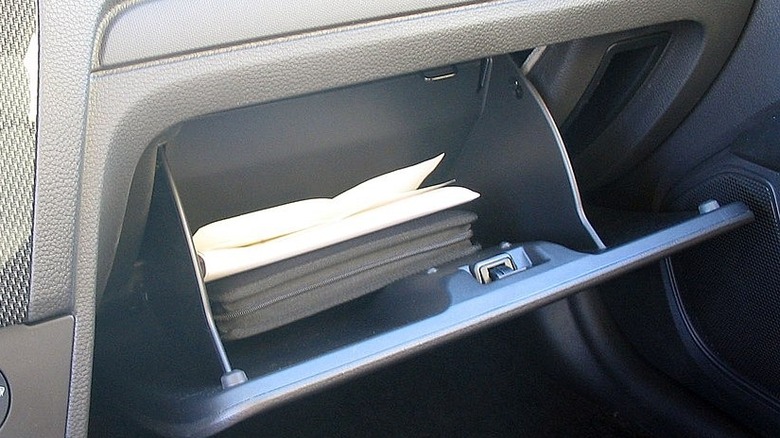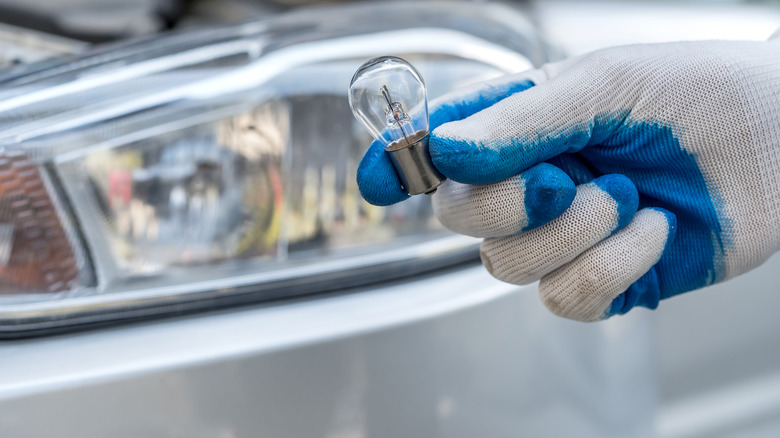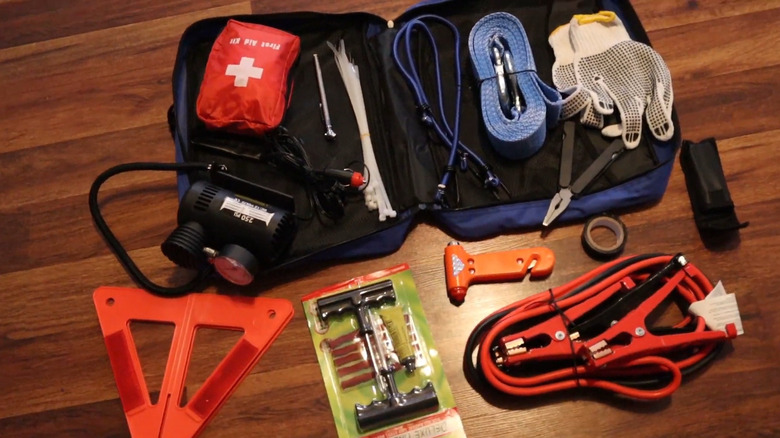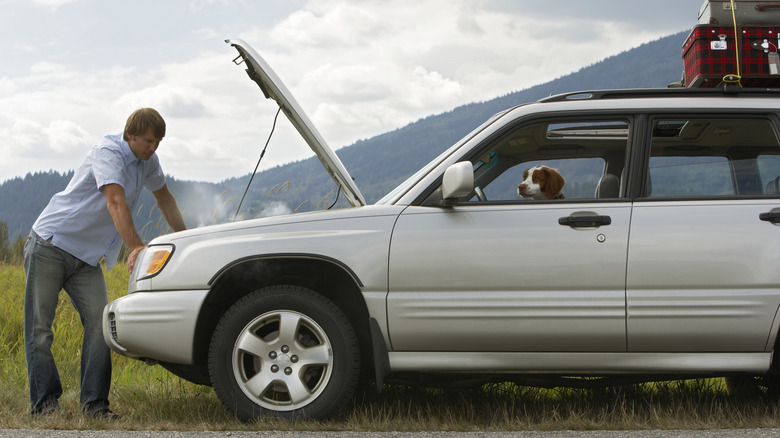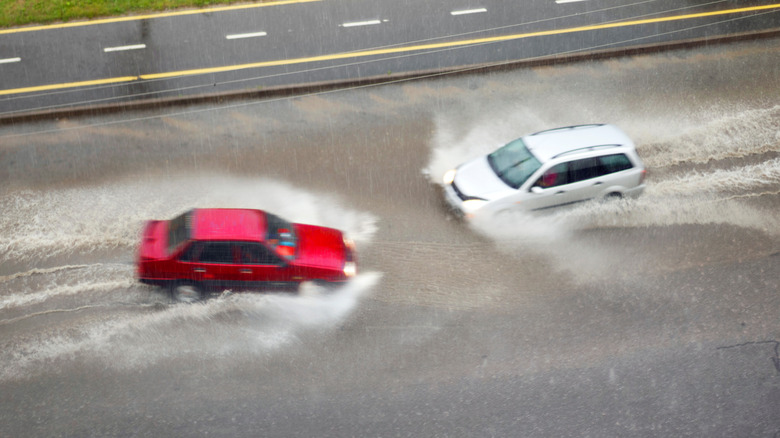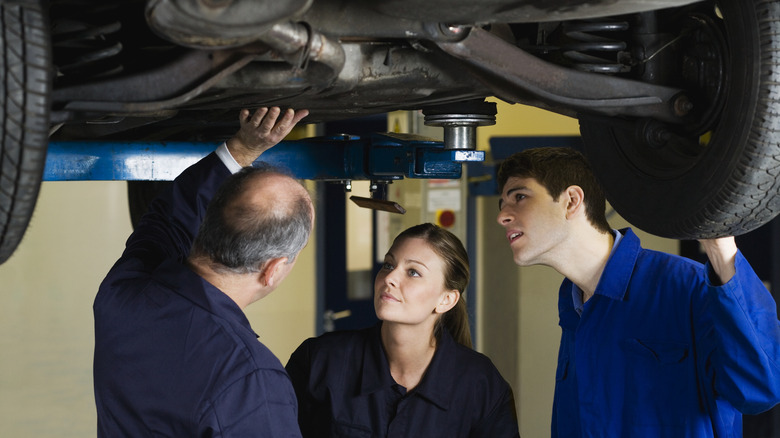12 Essential Tips Every Car Owner Should Know
We may receive a commission on purchases made from links.
Whether it's new or used, becoming a car owner is a huge life event. It's been said that after housing, a car is most people's second biggest expense. Between maintenance, insurance, gas, and monthly payments, it's amazing how quickly costs can add up for this staple of American life. In some circumstances, car ownership can be a necessity depending on a number of factors including where one lives, how one works, and what the intended uses of the vehicle are.
One thing a lot of car owners don't realize is the amount of maintenance and care, and knowledge, it takes to keep a car running. Often, these little steps are overlooked, but they can all cause a great deal of stress when something goes wrong. However, a little planning, education, and practice can go a long way in keeping a vehicle on the road. While we can't all be ASE-certified technicians, there are several things a car owner can do to ensure their four-wheeled baby can continue to serve them for as long as possible.
Know what those dashboard lights mean
Modern vehicles have literally dozens of dashboard indicators. The replacement of backlit gauges with digital screens hasn't eliminated or completely replaced those indicators just yet, and knowing what each little guy means will save a car owner from undue stress when one kicks on. While every car (and, frequently, every indicator) is different, there are a few dash lights that are practically universal, and they're the ones a car owner should know the location and meaning of on their vehicle. For example, the "check engine" light exists on nearly every car or truck. Whether it's bold text or a yellow engine silhouette, it's the vague reminder that something in the engine or emissions system has gone awry.
Other slightly more straightforward indicators include low windshield washer fluid, maintenance required, tire pressure monitor, oil pressure, low fuel, coolant and transmission temperature, brake system, battery and charging system, traction control, airbag, and door ajar. That's not a short list by any means, and also not an exhaustive one. The best way to know the specific lights, and where they'll pop up on a given vehicle, is to read the owner's manual. That's a mantra that is going to be repeated with good reason -– the manual is a valuable resource full of vehicle-specific information! If it's not available, a quick internet search can often lead to either a document reseller or a .pdf of the resource.
Know when it's worth getting those dash lights checked
That list of dashboard lights can seem overwhelming, but knowing that many of them are reminders for systems that aren't going to send one's vehicle careening over a cliff can lighten that mental load. Part of knowing what those lights mean is being aware of what can be done about them, either with a little DIY or a quick trip to a nearby parts store or gas station. Some are obvious – the low fuel indicator, for instance, can almost always be shut off by adding fuel, a TPMS light should go off if a little air is added to the tires, and a door ajar light can be rectified by opening and closing the doors and trunk. If those quick fixes don't work, there's likely an issue with a sensor, a leaky tire, or a door latch respectively.
There are a few that can be trickier. The "maintenance required" light on several vehicles is not an indicator that something is wrong, but a mileage-based reminder that it's time for a service visit. In cold weather, tire pressure monitors may kick on, but oftentimes driving for a few minutes will warm up the tires and the light will shut off. A "check engine" light can come on if a gas cap is left loose, an air filter isn't secure, or a sensor has failed – but it can also indicate a bigger problem. It never hurts to stop by a nearby parts/repair shop and ask for a code check. That applies to any indicator light one is unsure of – many places will check a light for free and help guide car owners in the right direction for a repair.
Learn if your vehicle has a spare and how to put it on
Knowing how to install a spare can save time, money, and a headache. Unfortunately, what was once common knowledge is not something that every car owner has been taught. That's okay! There's no shame in not having learned something, and teaching oneself how to change a tire isn't as scary as it may seem at first. YouTube has no shortage of folks willing to guide drivers through the process –- AAA has an entertaining video that still manages to get through the basics quickly. Practice a few times; after all, it's one thing to install a tire in a garage, and another entirely to do that process at night on the side of the highway.
What's as important as knowing how to change a tire is being prepared for it. The spare should be checked often for both proper pressure and dry rot or cracking. Make sure to know where the spare, jack, and tire-changing tools are stored. In most cases, they're under a panel in the trunk. In some, for instance, the 2017 Dodge Grand Caravan GT, the spare is beneath the front seats, under the vehicle, with an access hole built into the center console.
Another quick note – according to AAA, around 30 percent of new cars don't come equipped with a spare tire. A combination of government fuel economy standards (less weight = better fuel economy) and profit-driven automakers (not including a spare, jack, and tools saves money) combined to put around 30 million cars on American roads without a spare. Many of these cars come with a can of tire sealant or are equipped with run-flat tires. If a temporary repair with sealant is used, it's imperative to get that tire fixed or replaced as soon as possible.
Stay on top of regular maintenance
Oil changes, tire pressure checks, fluid levels, and wiper condition are all easy things to check and important to know. The old rule for oil changes was every three months or 3000 miles, but the introduction of more efficient engines and synthetic oils means that many cars can easily go twice that far. There are even oils that suggest a vehicle can go an entire year before needing a change. These are great for the car owner, saving time and money, but if one plans on waiting that long between visits to a technician, there are some maintenance items that need to be inspected.
Obviously, if any indicator lights are on, they need to be addressed. Tire pressure should be maintained – a placard inside the driver's door panel often lists manufacturer-recommended pressures for the fronts, rears, and spare; the number printed on the tire itself is max pressure, NOT recommended pressure. Tire tread should be above 2/32 of an inch, or the distance between the top of Lincoln's head and the edge of a penny. Tires should also be rotated about every 5000 miles. Under the hood, battery connections should be tight and clean. Owners should know what fluids go where and how to check both condition and levels of those fluids. Most reservoirs have markings indicating full or low levels, and the caps on those bottles will often indicate what type of fluid should be used.
Also, know what the car's serpentine belt should look like, and where it's located under the hood. A cracked belt is obvious, and the worse it gets, the more obvious it becomes. Small cracks become large, missing sections of belt ribbing. If it's not replaced, it can become a series of torn rubbery ribbons infesting every pulley under the hood.
A little DIY never hurt anybody
On top of knowing how to change a tire and knowing what fluids go where there are a few other DIY inspections and repairs that any car owner should be able to perform. Air filters, usually located under the hood, and cabin filters, typically behind the glove box, are usually pretty simple replacements. A dirty air filter can reduce fuel efficiency and emissions, and a neglected cabin air filter can introduce mold and unpleasant odors into the vehicle, as well as reduce heating and cooling efficiency.
Torn or streaking windshield wipers should be replaced, and most can be installed with no tools and the instructions included in the new wiper blade's packaging. A corroded battery, common in any vehicle with a 12-volt battery, can reduce battery performance and, in time, cause other electrical issues. A little baking soda mixed with water and a toothbrush or small wire brush makes quick work of that but make sure to have gloves and protective eyewear or a face covering because that stuff splatters everywhere. When looking to learn basic DIY tips, YouTube can be a fantastic resource for not just general advice, but often specific instructions for a particular vehicle.
Know the car, and be aware of changes
Part of owning a vehicle is getting to know the little nuances of it. When a car is first acquired, especially if it is replacing an owner's first one, things like braking distance, suspension, and engine noise can stand out not because there's a problem, but because this new vehicle is simply different from that first one. Knowing those little differences and getting used to them is a normal part of car ownership, but it also benefits the driver in another way. Suspension feels different when shocks or struts leak out; tires can wear irregularly from worn suspension components as well, causing a constant bumpy feeling. Brake pads make noise when they get down to the wear indicator. Brake pedals pulsate when rotors are warped. Knowing what's normal for a given vehicle means knowing when something weird is happening.
This also means knowing the car's identification information. Be aware of the year, make, and model of the vehicle. Knowing the engine size and option package can save a shop technician time and hassle, since those aren't always indicated on the vehicle itself. Have a copy of the vehicle identification number, or VIN. It's on the vehicle in a number of locations, including the driver's door placard and on the dashboard, visible from the outside through the bottom driver's side of the window. Keeping a photo of the VIN and license plate in the owner's phone can save a lot of headaches when dealing with insurance, tow companies, or police.
Keep that glove box organized
The glove box often becomes the junk drawer of the car, a handy bin for everything from candy wrappers to hair ties to the occasional firearm. This can result in unnecessary stress and frustration, especially when one gets pulled over and can't find important documents. Things that can, and should, be stored in there include the vehicle's registration and insurance info, a pen and paper, a rechargeable battery pack (the kind that doubles as a jump starter is even better), a tire pressure gauge, the correct phone charging cable for everybody who uses the car, and maybe even a little emergency hammer.
Fun fact – napkins are a terrible thing to store in the glove box. Those cabin air filters that we mentioned earlier? They are usually housed behind the glove box because the blower motor is also often located back there. It's a drum-like fan that blows hot or cold air into the car's cabin. It also tends to suck loose napkins into it, causing a loud noise, not unlike a baseball card in bicycle wheel spokes. Repair shops often charge at minimum an hour of labor to remove those napkins from the blower motor because of the work involved in removing the fan to clean it out. The moral of this story is to keep the junk out of the glove box – that's what the center console is for.
[Featured image by Q4RadioGuy via Wikimedia Commons | Cropped and scaled | CC BY-2.0]
Be aware of exterior lights
An indicator light that we didn't previously mention is the one that looks like a light bulb with an exclamation point in the middle. Not all vehicles have this, but it's there to tell the driver that an exterior light is out. Some vehicles even can tell the owner which bulb has failed. However, these are not foolproof, and it's worth making sure all the lights are working when performing regular maintenance checks. This is more easily done with a buddy, but simply having the vehicle near a wall and tapping the brakes can alert a driver to failed brake bulbs.
Headlights and high beams, running lights, rear plate lights, brake lights, reverse lights, and turn signals should all be verified as operating. Fast blinking turn signals are a sure sign bulbs are out or near failure. Some brake lights double as turn signals, one bulb with two filaments. If one bulb is out, it's best practice to replace its counterpart at the same time. Most headlights can be easily accessed under the hood, and just twist into place and plug into a connector. A felt panel in the trunk, or a pop-out panel on the rear hatch, is often all that stands between the driver and brake and reverse bulbs, most of which either pull right out or have a push-and-twist design. Reading the manual and learning how to replace easier-accessed bulbs oneself can save time and money, and it feels great to know one can handle those easy (and frequently ticketable) fixes for friends and family as well.
Have an emergency kit prepared
Emergency kits are often overlooked when preparing for a trip, or when one first acquires a new vehicle. They aren't usually included in a vehicle, but being stranded without one can be devastating. Keeping a kit in the trunk of a car doesn't mean sacrificing a ton of space, and making sure to know what should be in the vehicle's interior versus what's stowed in a potentially inaccessible trunk can make all the difference.
Pre-packaged kits are available online (like this one at Amazon) and at most auto parts stores, warehouse stores, department stores, and even gas stations. Most cost between $50 and $100 and include a first-aid kit, flashlight, reflective triangles or flares, work gloves, some duct tape, and a small tool kit along with 4- or 6-gauge jumper cables, perfect for most cars and trucks. However, if a more comprehensive kit is desired, the addition of things like a mylar emergency blanket, water and snacks, paper towels or rags, an empty gasoline container, traction aid like sand or kitty litter, and an ice scraper/snow brush are all suggested.
Have a tow company's number in your phone's memory
Getting stranded on the side of the road is as nerve-racking a situation as a driver can deal with. Even for something as simple as an empty gas tank, the stress and frustration that comes with leaving a vehicle to grab a refill or some assistance is nothing trivial. Being prepared for this situation is not as dramatic as it can seem, and often just requires a phone number.
Keeping a tow service's phone number saved in one's cell phone can mean the difference between the inconvenience of a tedious wait, and a desperate, dangerous walk alongside a busy highway. Asking the desk staff if they have a preferred tow company when one's vehicle is being serviced at their regular repair shop is a great way to get the number of a company that has an existing relationship with that shop. Ideally, the tow company is near the location of the breakdown; however, most tow companies are happy to look up a closer referral for a stranded motorist if that's necessary.
Another roadside assistance option is AAA. They've been around for over a century, and offer a tiered annual subscription service for between $80 and $170. Their longevity is due to the vast array of services offered, although many insurance providers have comparable benefits that policyholders often aren't aware of. Regardless of whether the number stored in one's cell phone is a tow truck, AAA, or their insurance provider's roadside assistance, it's better to have one stored in case there isn't a cell signal strong enough for Google near a stranded vehicle.
Be aware of weather hazards in your area
Depending on where the vehicle is being operated, any number of weather hazards can pop up and ruin a driver's day. According to the U.S. Department of Transportation, 21 percent of vehicle crashes and 16 percent of crash fatalities are weather related. Cautious driving and a reasonable amount of preparation can help to prevent disaster. Snow tires or chains are a must if you're in an area with frequent snowfall or a mountainous area. Extreme heat can contribute to overheating – a spare bottle of antifreeze or, in an emergency, water can help.
Flash floods can hide potholes and create a body of standing water deep enough to stall a car out, or rushing water powerful enough to wash one away. The National Highway Traffic Safety Administration reports that only 12 inches of rushing water can carry away most cars; twice that and most trucks and SUVs can be swept away. The CDC reports that the most common type of flood-related drowning occurs when a vehicle is driven into flood water. Put simply, if a road is flooded, "turn around, don't drown."
Have a relationship with a legitimate automotive technician
Rather than stopping into the local grease monkey when you need an oil change, a great practice as a car owner is to develop a relationship with a repair shop. Most shops tout certifications like the ones offered by the National Institute for Automotive Service Excellence (ASE), a voluntary certification program that tests technicians' aptitude in a number of automotive systems. While certification isn't mandatory in the industry, a knowledgeable technician knows what to look for and can help you get ahead of issues before they become problems.
Even in a shop where something as simple as an oil change is being performed, a full inspection is almost always provided free of charge. This provides benefits for the tech, the shop, and the customer. Techs often earn extra based on their findings, the shop has a record of reported issues in case a customer doesn't proceed with repairs, and the car owner stays abreast of issues that may be serious, or may become serious if not addressed. Having a relationship with an expert, whether that's at a dealership or an independent shop, can make a difference in both the life expectancy of a vehicle and the bank account of the owner.

